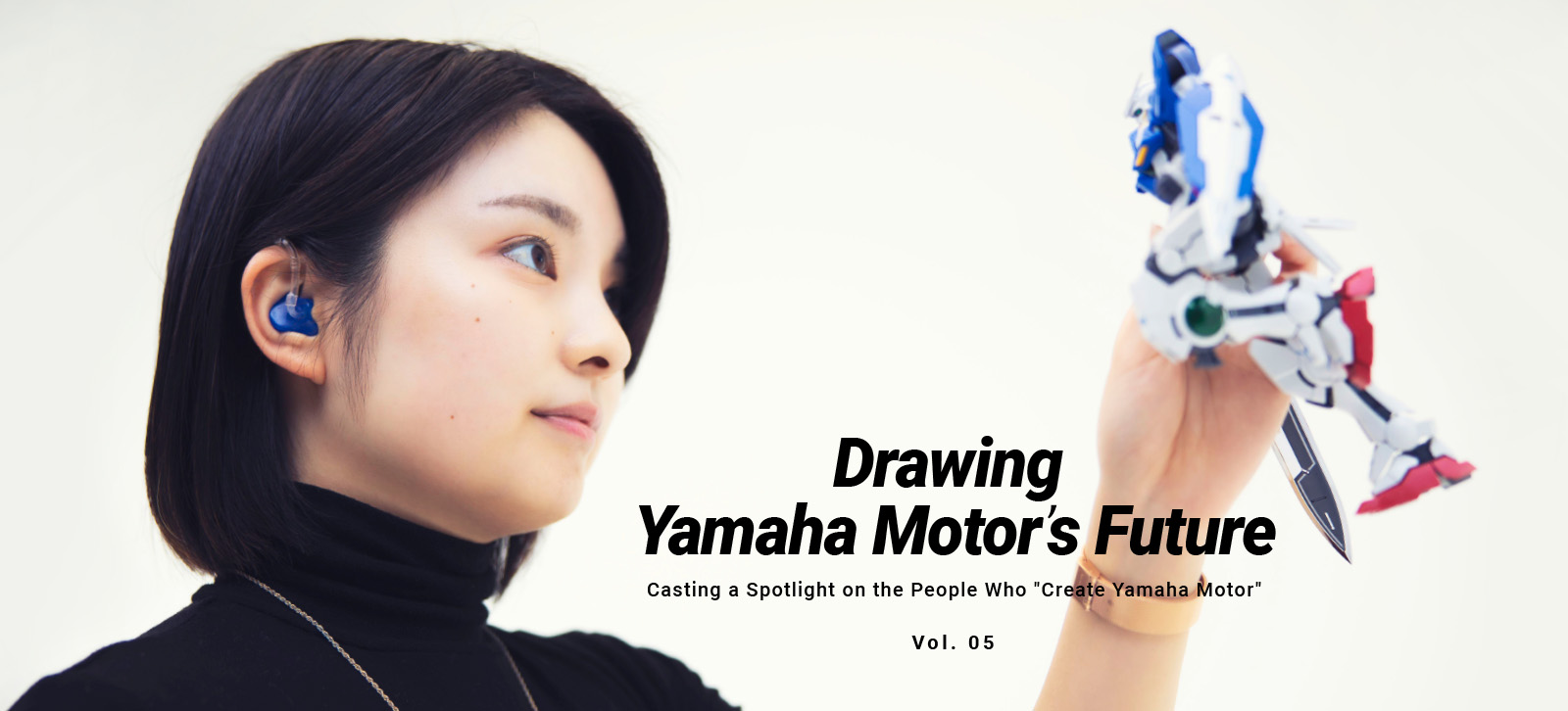
Works in the Sculptor Group at the Design Center’s Product Design Division. Born in Shizuoka Prefecture. Fell in love with anime and gaming as a child and spent her youth immersed in drawing illustrations and manga. Majored in communication design at her university’s school of art and design. While her studies focused on website design and the like, she realized she wanted to be involved in three-dimensional creation and joined Yamaha Motor.
“Everybody you’ve featured so far is so professional with their hobbies, so I feel pretty amateurish compared to them,” says Saori Shinchi with a modest smile as she enters. We’re conducting this interview in a studio at the Yamaha Motor Innovation Center, home of the company’s Design Center. She’s holding a box she’s brought in with unusual care so we ask her to show us what’s inside. As she opens it, we see something that most boys in Japan have at one point in time become infatuated with growing up: plastic models of robots from one of Japan’s most well-known anime series—Mobile Suit Gundam. Originally airing in 1979, the show and franchise celebrated its 40th anniversary in 2019 and continues to win new fans around the world. Shinchi confesses that building Gundam plastic models (commonly known as “Gunpla”) has utterly consumed her time and interest for some years now.
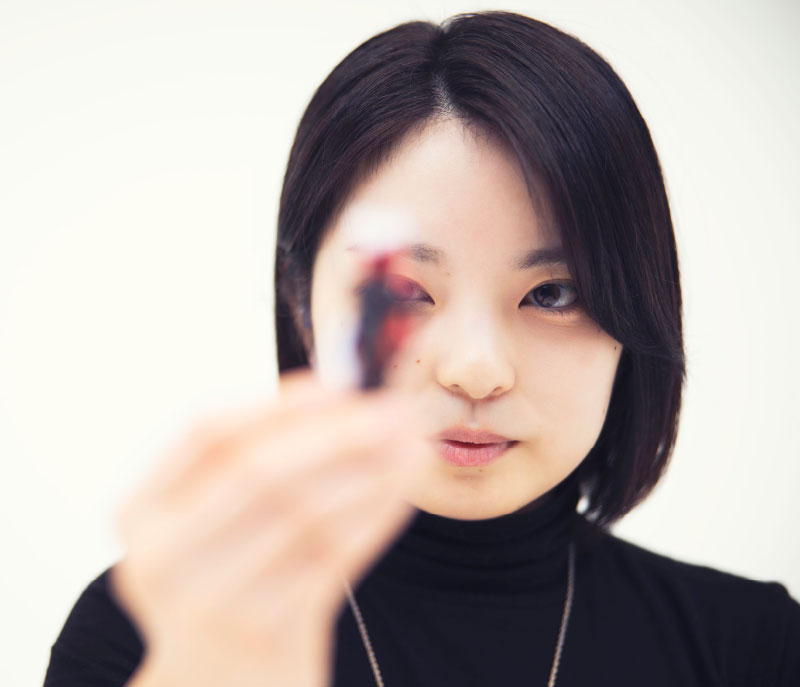
As a child, Shinchi often played with her brother. Seven years older than her, she says he played a big role in sparking and fostering her interest in anime and video games. “I clearly remember how crazy my brother was about plastic models when he was in elementary school,” she says. “He’s seven years older than I am, so at the time I obviously wasn’t able to try doing it myself, but even as a child, I thought it was really cool how he would slowly build airplanes and cars out of all those little pieces.”
As she grew older, Shinchi also discovered the fun in creating things and began drawing her favorite anime characters or forming them from clay. This also led her to major in communication design in university, and it was the friends she met there that got her interested in Gunpla. “I was studying two-dimensional design so there were others in my class that wanted to become animators and illustrators. I became friends with one of them and she got me hooked on Gundam anime. Knowing that I liked to make things, she suggested I try building plastic models instead of just watching the anime.”
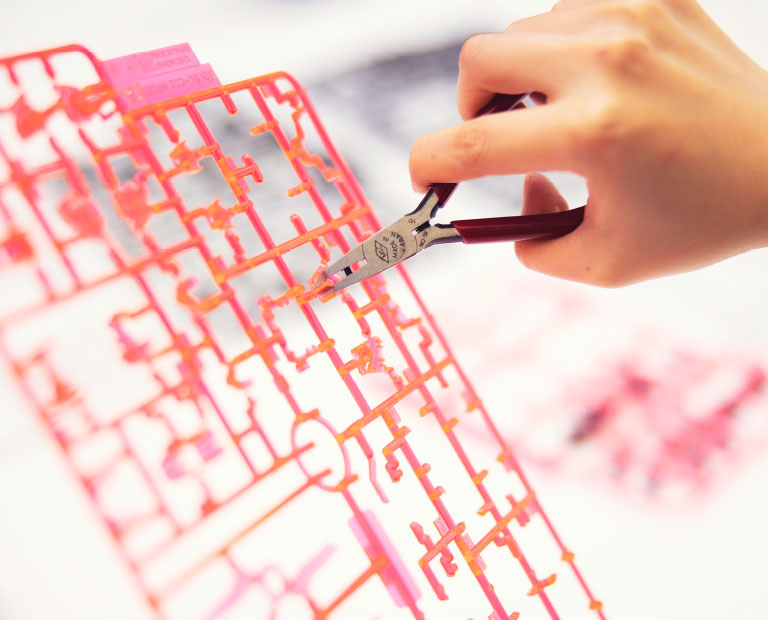

It made sense; she could make the Gundam mobile suits she liked the most with her own hands and with the plastic models she loved as a kid. It wasn’t long before Shinchi was entirely absorbed in building Gunpla. After repeated trial and error, she says she’s made some fifteen models so far. “It doesn’t sound like that many, but I really take my time to build just one. A typical model takes the average person about a week to build, and someone who works fast can complete one in two or three days. But I after I’ve clipped off the parts, I go over each one with a file to remove the nub marks showing where they were attached, so it takes a lot of time. This is why it sometimes takes me more than a month to complete one model.” Because this can alter the final look, Shinchi devotes meticulous care and attention to detail to filing away imperfections on even the tiniest parts. Her concentration clearly shows but so does an almost loving expression, conveying the pleasure she feels in spending time on Gunpla.
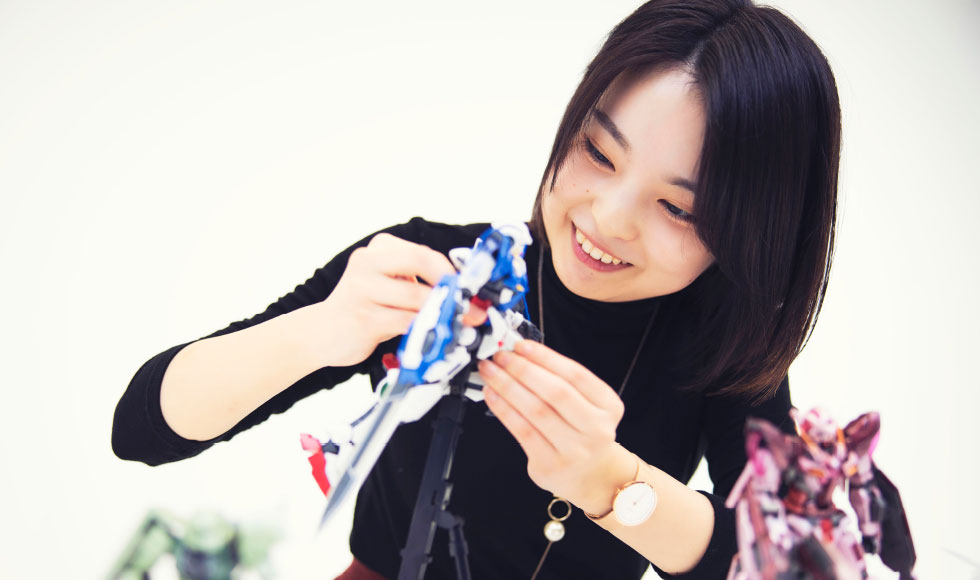
Besides filing away nub marks, Shinchi has several of her own personal preferences when it comes to building Gunpla. For example, instead of applying all the included decals according to the instructions, she selects and applies only those actually found on the mobile suit in the anime. She also doesn’t apply the paint where the parts join to give them the artificial shadowing that makes them look more three-dimensional, choosing to retain the original part paint in order for her models to keep the two-dimensional look from the world of anime.
“For me, Gunpla are for recreating the mobile suits from the anime, and that’s why I don’t want to use decals that weren’t there in the actual anime or any unnecessary shadowing on my models,” insists Shinchi. “Instead, I like to do things like set up really cool poses from the animes or movies and photograph them. I try to really faithfully recreate the poses the suits take during space battles and sometimes get so into it that the day’s over before I know it!” she says with a laugh.

When we asked Shinchi whether she liked any other anime besides Gundam, Macross Frontier and Code Geass were her answers. “But aren’t those all robot anime?” we ask. “Yes,” she laughs. “This is why most of what I talk about clicks better with boys than with girls. Ever since I was a child, I’ve always liked machines that move, so it might be from that.” In short, Shinchi is fascinated by machines, but she attributes her hearing impairment as having a profound link to that fascination.
“I went to a regular school so I can’t do or understand any sign language, and people are often surprised that I can communicate just by reading lips and a hearing aid since I’ve been almost completely deaf since birth. To compensate for my lack of hearing, my parents tried to have me see and experience things visually and took me on many field trips as a kid. We went to places like a meat processing plant where I saw minced meat being made and a post office where tons of letters and packages were all being are sorted by machines. I was so excited seeing it all and really wondered how they worked. I think those trips and experiences are what first got me interested in machines.”
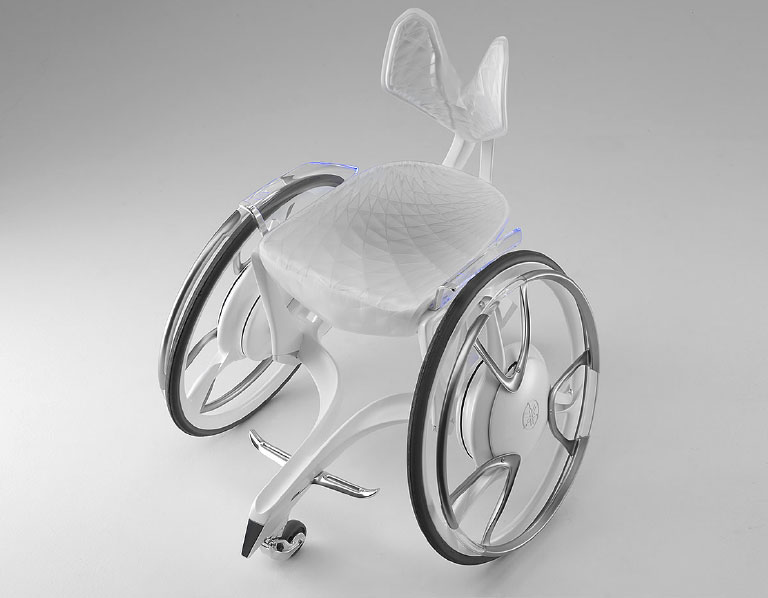
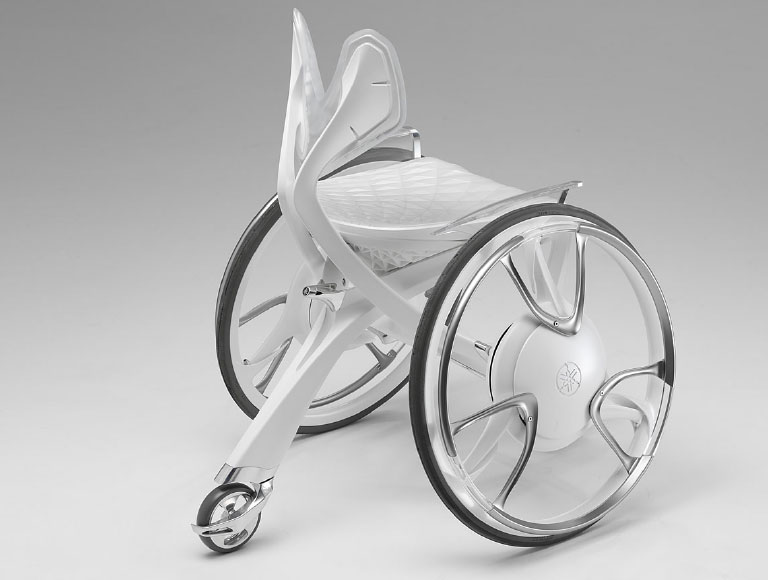
In fact, Shinchi’s hearing impairment was a large part of what led her to pursue working for Yamaha Motor after graduating from university. “I studied the two-dimensional world of design in university, but I gradually became more and more interested in creating three-dimensional objects, so I looked for consumer product companies based near my hometown of Hamamatsu. While researching various different companies, I learned for the first time that besides making motorcycles, Yamaha also makes electric wheelchairs for people with disabilities. And the 02GEN concept model was really big part of it for me. Yamaha was not only responding to the subconscious feelings and needs of people with disabilities but also did it through such a cool and beautiful design. The company’s approach made me a big fan.”
Shinchi joined Yamaha Motor with the wholehearted intent to work in product modeling. Currently a member of the Sculptor Group at the Design Center’s Product Design Division, she uses CAD to create 3D recreations of motorcycle parts based on designer sketches and engineering data.
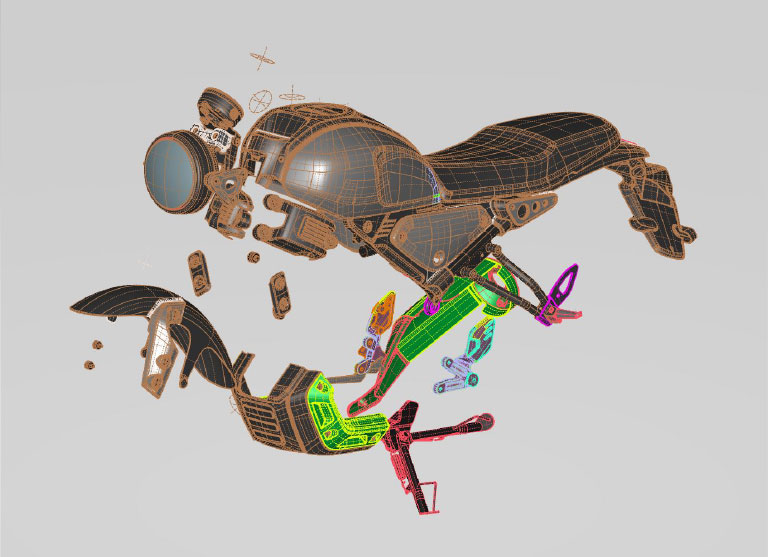
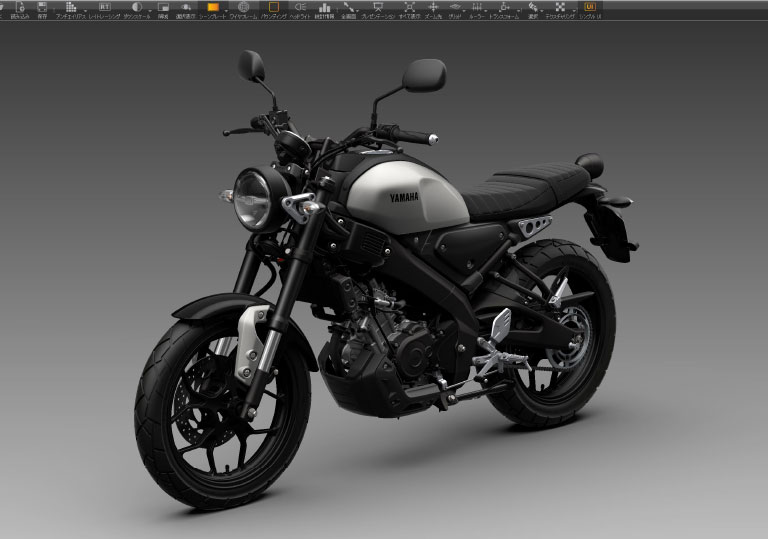
“There are sometimes conflicts between what the designers want to create and what the engineers deem as technically feasible. In other words, a gap between the ideal and reality,” admits Shinchi. “But both are striving for the same goal, so my job is to stand in the middle and search for a compromise that suits both sides but still results in a product that’s as cool-looking as possible. My own suggestions and ideas are sometimes implemented in the design and it really makes the job rewarding.”
Shinchi is neither timid nor does she shrink from a challenge; she fires off questions about whatever she doesn’t know and is always willing to take on something new. And although she started working on product modeling from scratch, her supervisor points out that her progress has far exceeded expectations.

When Shinchi is away from work, she indulges in fashion and shopping in her private life just like any other young woman. She began doing nail art in junior high school and uses the dexterity she’s honed with her hands to create highly detailed designs. From plastic models to nails and fashion, Shinchi’s hobbies keep her busy, but since she works at Yamaha, she also wants to get her motorcycle license someday. In fact, she already knows what bike she wants.
“I really like the sporty and active design of the MT-07. And its overall sharp and angular form has a lot in common with a Gundam, so of course that makes it look even cooler! [laughs] Getting the unrestricted license to ride a big bike won’t be easy but I want to get it someday.”
In the not-so-distant future, Shinchi’s seemingly boundless passion and respect for Gundam will almost certainly find its way into the shape of a motorcycle part that will someday bring love and inspiration to other motorcycle riders.


